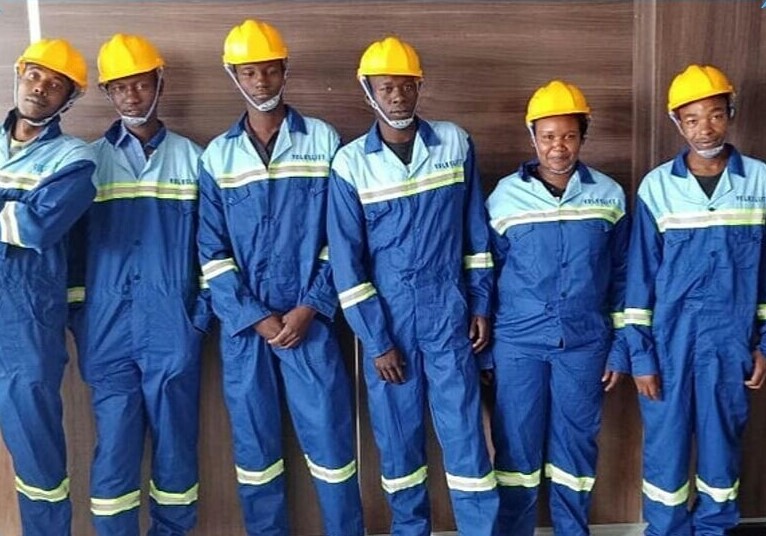Despite how many people ride elevators, a large number of riders are afraid that something could happen during their ride. While most people use them daily with no issues, it doesn’t change the fear and anxiety that occur due to the elevator myths told in the society. Here are three common elevator myths that might change your mind about elevator safety.

“Elevators Rely on One Rope”
Too many people believe that if one rope snaps on an elevator that it will free fall. Elevators use multiple steel cables and each cable can support the fully-loaded car. The truth is that most of the safety mechanisms in an elevator are hidden. In the movies, it may look like one snapped rope can cause an elevator to fall. This couldn’t be any farther from the actual truth.

“Elevator Doors Can Open Even if The Car is Not There”
You’ve seen it in movies, someone is waiting for an elevator, the doors open to nothing causing them to fall into the shaft. This will not happen in real life. Elevator doors are controlled by the car, when the car reaches the landing, it triggers the doors to open. If the car is not in the correct spot, the doors cannot open on their own. The only way the doors can open without a car is if they are pulled open by an elevator maintenance worker using the proper tools.
“A Crowded Elevator Can Fall”
Elevators are equipped with sensors that won’t let the elevator move if there are too many passengers. In fact, the doors will usually remain open and a buzzer will sound to warn people to get off the elevator. Once enough people are off the elevator, it will function again. In some cases, the elevator may even have technology to distribute riders to reduce overcrowding.

While everyone rides elevators, not everyone knows all of the safety measures involved. The truth is that elevators are safer than people imagine them to be. It makes sense why people have concerns about elevators, but most of it can easily be debunked. For elevator installation or for answers to your elevator questions, contact Elevator Service by calling 0716 757 222 or emailing us today!
Can you imagine your building elevator not functional? Most people cannot. This is why proper elevator maintenance is a necessity.
Elevator maintenance involves ensuring that no accidents or breakdowns happen on elevators. Elevator maintenance helps avoid major replacements and it prolongs the life of elevators.

Choosing the right company for the maintenance of your building’s elevator will be connected to various benefits.
RELIABILITY AND HIGH QUALITY
The first and most obvious one is reliability. The elevator will be maintained in a proper way, which means that its up time will increase. You can expect quick reaction in the case of a problem.
Quality of maintenance matters, as well. This is why you should choose the right elevator companies. Picking the right contractor is essential for success. Proper maintenance will decrease the need for frequent calls to have your elevator repaired. Even if you have to pay more for a company that provides good customer service, you will be doing it less regularly than in the case of a mediocre elevator maintenance service.
ELEVATOR PASSENGER SAFETY
You will also be enjoying increased safety by selecting the right elevator companies. Let’s face it – the safe operation of an elevator is a very important aspect of maintaining a safe building. Elevator maintenance follows a set of criteria designed to maximize the safety of the people using it. Smooth transportation starts with a safe elevator that is functioning properly.
GETTING THE LATEST ELEVATOR TECHNOLOGY
Just like in the case of any device, an elevator will become outdated as time passes. Technology is changing and so are elevator parts. Look for an innovative elevator maintenance company to advise you on the best available technology for your elevator.
Contracting a quality elevator company will ensure that you will be gaining access to the latest technologies. Old parts will be replaced with innovative ones that increase the efficiency of the elevator and its longevity. An old system can be replaced altogether, giving you and the people living in the building access to the newest and most comfortable elevator ride.
Elevator passengers are expecting convenience and safety. It is your duty to make sure that you are getting access to an elevator company that provides superior customer services. Proper research and taking the time to interview different companies is essential for the selection an elevator company to best fit your needs.
Project management is the practice of initiating, planning, executing, controlling, and closing the work of a team to achieve specific goals and meet specific success criteria at the specified time.
At the start of a project, the amount of planning and work required can seem overwhelming. There may be dozens, or even hundreds of tasks that need to be completed at just the right time and in just the right sequence.
At Volkslift East Africa we guide our clients through the stages of project management.This ensures that the projects are completed on schedule and within the allocated budget. Lets take a look at the various stages:
Seasoned project managers know it is often easier to handle the details of a project and take steps in the right order when you break the project down into phases. Dividing your project management efforts into these five phases can help give your efforts structure and simplify them into a series of logical and manageable steps.
1. Project Initiation
Initiation is the first phase of the project lifecycle. This is where the project’s value and feasibility are measured. Project managers typically use two evaluation tools to decide whether or not to pursue a project:
- Business Case Document – This document justifies the need for the project, and it includes an estimate of potential financial benefits.
- Feasibility Study – This is an evaluation of the project’s goals, timeline and costs to determine if the project should be executed. It balances the requirements of the project with available resources to see if pursuing the project makes sense.
Teams abandon proposed projects that are labeled unprofitable and/or unfeasible. However, projects that pass these two tests can be assigned to a project team or designated project office.
2. Project Planning
Once the project receives the green light, it needs a solid plan to guide the team, as well as keep them on time and on budget. A well-written project plan gives guidance for obtaining resources, acquiring financing and procuring required materials. The project plan gives the team direction for producing quality outputs, handling risk, creating acceptance, communicating benefits to stakeholders and managing suppliers.
The project plan also prepares teams for the obstacles they might encounter over the course of the project, and helps them understand the cost, scope and time frame of the project.

3. Project Execution
This is the phase that is most commonly associated with project management. Execution is all about building deliverables that satisfy the customer. Team leaders make this happen by allocating resources and keeping team members focused on their assigned tasks.
Execution relies heavily on the planning phase. The work and efforts of the team during the execution phase are derived from the project plan.
4. Project Monitoring and Control
Monitoring and control are sometimes combined with execution because they often occur at the same time. As teams execute their project plan, they must constantly monitor their own progress.
To guarantee delivery of what was promised, teams must monitor tasks to prevent scope creep, calculate key performance indicators and track variations from allotted cost and time. This constant vigilance helps keep the project moving ahead smoothly.

5. Project Closure
Teams close a project when they deliver the finished project to the customer, communicating completion to stakeholders and releasing resources to other projects. This vital step in the project lifecycle allows the team to evaluate and document the project and move on the next one, using previous project mistakes and successes to build stronger processes and more successful teams.
Although project management may seem overwhelming at times, breaking it down into these five distinct cycles can help your team manage even the most complex projects and use time and resources more wisely.
